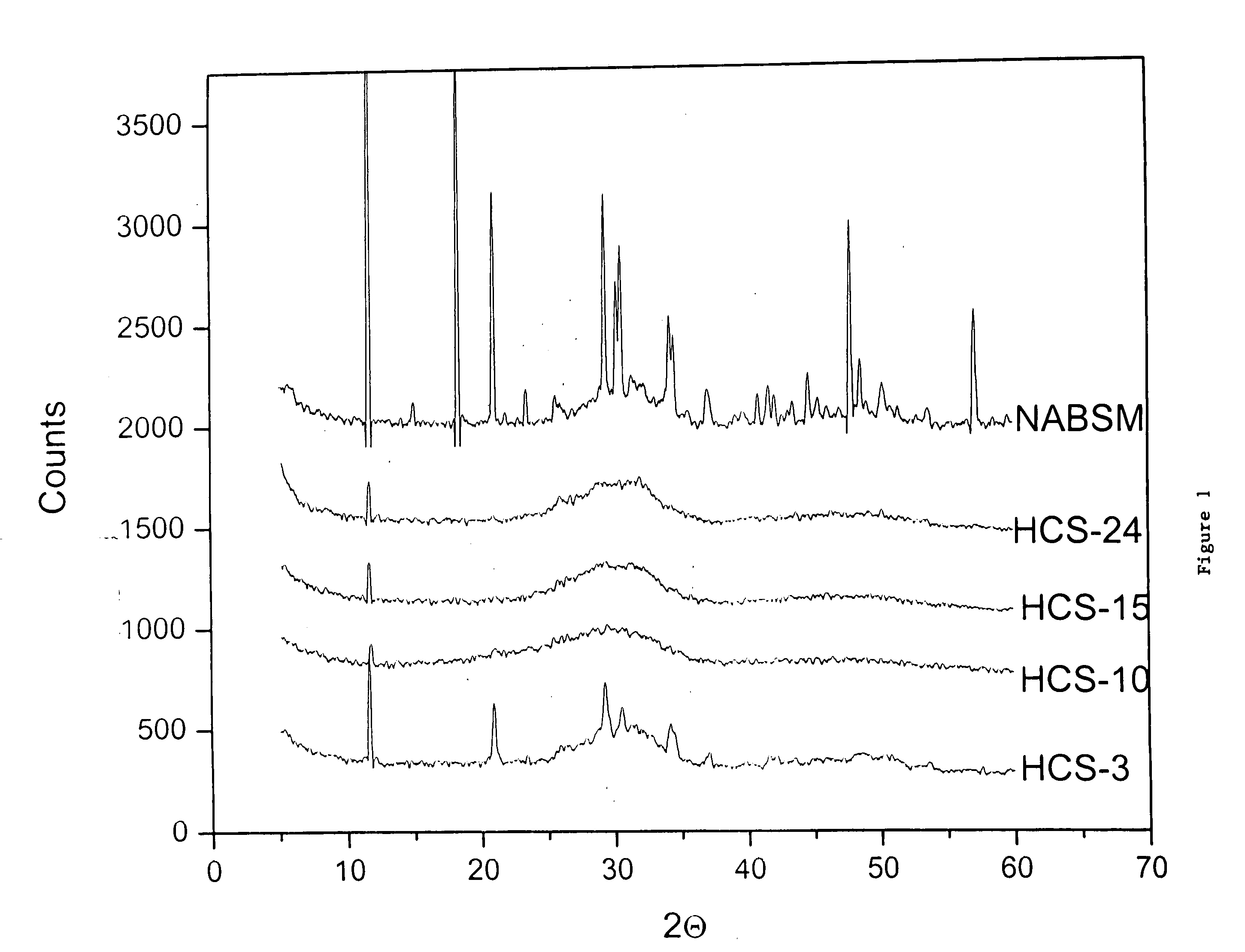Osteoinductive bone material
a bone material and osteogenesis technology, applied in the field of bone repair and replacement, can solve the problems of reducing the mechanical strength of the implant, disfavored metal devices, and complicated use of autogenic, allogenic and xenogeneic bone, and achieve the effect of maximizing the implant's regenerative ability without compromising its formability and mechanical strength
- Summary
- Abstract
- Description
- Claims
- Application Information
AI Technical Summary
Benefits of technology
Problems solved by technology
Method used
Image
Examples
example 1
Preparation of Demineralized Bone Matrix Fibers
[0082] This Example describes the preparation of DBM particles that are fibrous in nature.
[0083] Long bones were cleaned to remove all connective tissue. The end plates were removed to isolate the cortical bone component of the long bone, and the marrow was removed. The hollow long bones were washed in alcohol to further clean and remove fat. The bones were then turned on a lathe. Shavings were made by pressing a straight-edged silicon carbide cutting tool into the surface of the bone. The cutting tool advances along the length of the bone to provide a length of bone shaving. The rate of rotation of the bone in concert with the rate of motion of the cutting tool can be controlled by those familiar with the process so as to control the rate of material removal. Shavings of thickness varying between 50 μm and 250 μm, widths between 2 mm and 10 mm and random length were obtained by this process. These shaving were then washed in ether to...
example 2
Preparation of Amorphous Calcium Phosphate
[0084] This Example describes the preparation of an amorphous calcium phosphate powder.
[0085] A solution of 1000 g of disodium hydrogen phosphate heptahydrate (Na2HPO4 7H2O) in 14.4 mL distilled water was prepared and stirred. To this solution, 555 g sodium hydroxide (NaOH), 333 g sodium bicarbonate (NaHCO3), and 2.2 g sodium pyrophosphate decahydrate (Na4P2O7 10H2O) were added sequentially to form solution 1.
[0086] A solution of 208 g of calcium nitrate tetrahydrate (Ca(NO3)2 4H2O) in 5.6L of distilled water was prepared and stirred. 11 g of magnesium chloride hexahydrate (MgCl2 6H2O) was added to this solution to form solution 2.
[0087] Solution 2 was quickly poured into solution 1 at room temperature and stirred for 1 minute. The amorphous calcium phosphate precipitated immediately and substantially completely. The pH of the suspension was 13±0.5, which was maintained to avoid conversion of the precipitate to an apatite or other more c...
example 3
Preparation of Dicalcium Phosphate Dihydrate (DCPD)
[0091] This Example describes the preparation of dicalcium phosphate dihydrate powder.
[0092] 20 g diammonium hydrogen phosphate ((NH4)2 HPO4) was dissolved in 1 L distilled water to prepare solution 3, having a concentration of 0.300 mol / L. It was verified that the pH of solution 3 was between 7.0 and 9.0.
[0093] 35.5 g calcium nitrate tetrahydrate (Ca(NO3)2 4H2O) was dissolved in 0.5 L distilled water to prepare solution 4, having a concentration of 0.300 mol / L. It was verified that the pH of solution 4 was between 5.0 and 8.0.
[0094] Solution 4 was poured into solution 3, followed by stirring for about 2 minutes. It was verified that the pH of the resulting suspension was between 5.2 and 6.2. The suspension was filtered by vacuum filtration to form a uniform cake. The cake was washed three times with 750 mL distilled water (2.25 L total). When washing was complete, the cake was separated from the filter paper and dried in a lami...
PUM
| Property | Measurement | Unit |
|---|---|---|
| Pressure | aaaaa | aaaaa |
| Pressure | aaaaa | aaaaa |
| Size | aaaaa | aaaaa |
Abstract
Description
Claims
Application Information
 Login to View More
Login to View More - R&D
- Intellectual Property
- Life Sciences
- Materials
- Tech Scout
- Unparalleled Data Quality
- Higher Quality Content
- 60% Fewer Hallucinations
Browse by: Latest US Patents, China's latest patents, Technical Efficacy Thesaurus, Application Domain, Technology Topic, Popular Technical Reports.
© 2025 PatSnap. All rights reserved.Legal|Privacy policy|Modern Slavery Act Transparency Statement|Sitemap|About US| Contact US: help@patsnap.com

